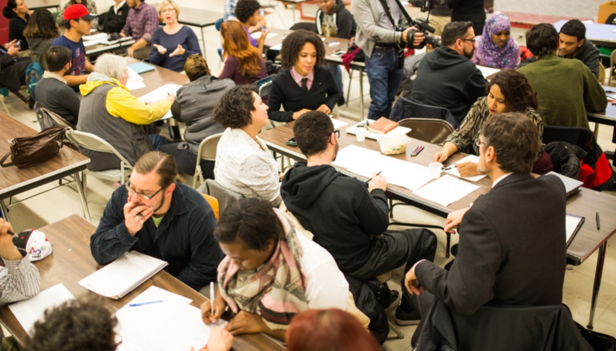Challenge
Boston Public Schools:
High School Redesign

PROJECT
CLIENT
SERVICE
- CX+
INDUSTRY
- Education
Boston Public Schools partnered with Continuum to envision what the high school of the 21st century might look like.
The City of Boston asked, “What is the future of high school education in Boston?” And the first step toward an answer was the High School Redesign project, a three-way partnership between the Mayor’s Office of Education, Boston Public Schools, and the Boston Opportunity Agenda.
The project began by collecting input from the public in May 2015. Community stakeholders and partners joined in numerous workshops—eventually these events involved over 2,000 participants across 29 sessions—and on social media, using the hashtag #HSReD.
In the fall of 2015, Continuum joined the High School Redesign team. Our central task was to review the accumulated data, pull out the central insights, and compose an inspiring and useful vision for the future of Boston’s high schools.
Solution
Ultimately, our vision took the form of a website that thoroughly documented the good work of the High School Redesign project. It is a digital artifact accessible to anyone in the Boston community, and beyond, who might want to use it as a resource.
As we worked on this project, we became passionately involved and wanted to add our voices to the public conversation. We wound up publishing several pieces of thought leadership, including a podcast with Rahn Dorsey, Boston’s chief of education; an interview with Ted Dintersmith, co-author of Mostly Likely to Succeed and executive producer of a similarly titled documentary; a post on networked learning; and a piece inspired by Madison Park on vocational education.
Finally, the High School Redesign work also yielded a number of frameworks on partnerships, programming, infrastructure, and student experience, that can be used by schools all over Boston. These frameworks give individual Boston schools the tools they need to envision, evaluate, and prototype new ideas and programs within their schools during the implementation phase of High School Redesign’s project.
Results
Following this first phase of the work, Continuum was called to help Madison Park embark on its three-year Turnaround Plan. We assisted in auditing Madison Park’s vocational education program and provided suggestions for restructuring it along the lines of our design principles. We are excited to help Madison Park as it implements its plan, makes internal improvements, and develops various outside partnerships. We are currently engaged in a long-term partnership with the City of Boston and are eager to provide continuing guidance in developing a promising future for its high schools.





